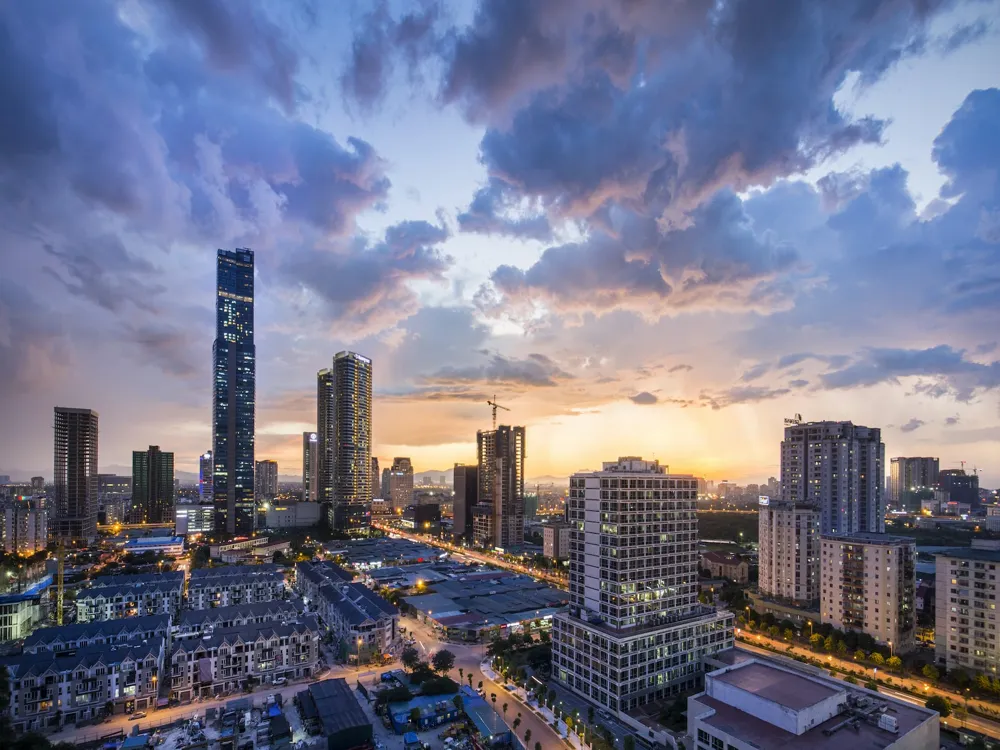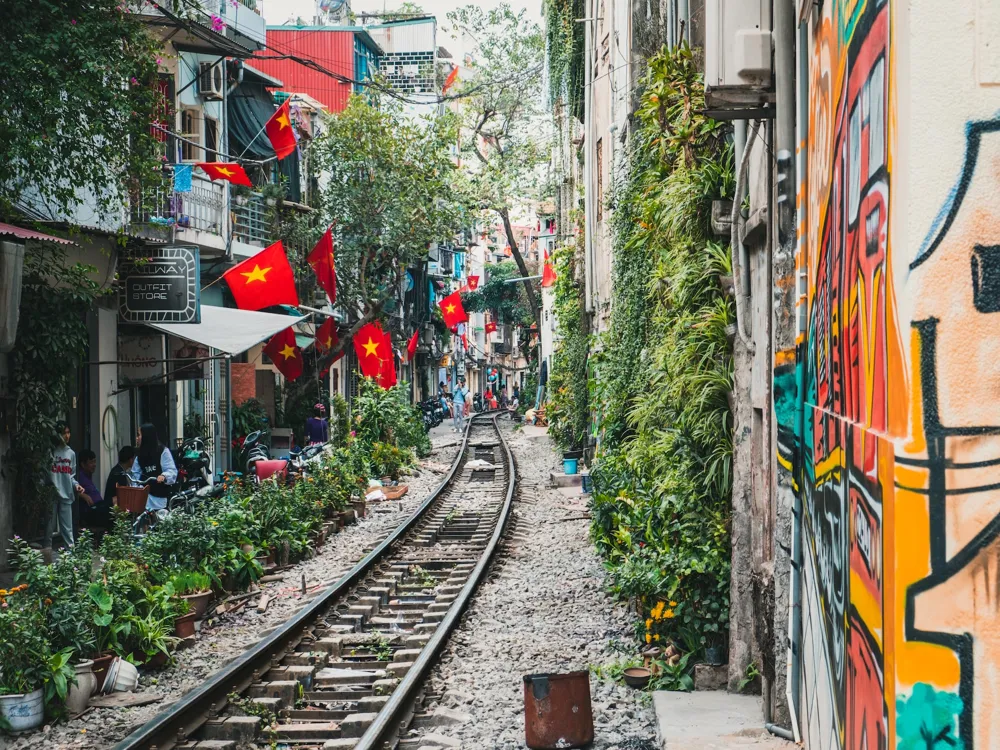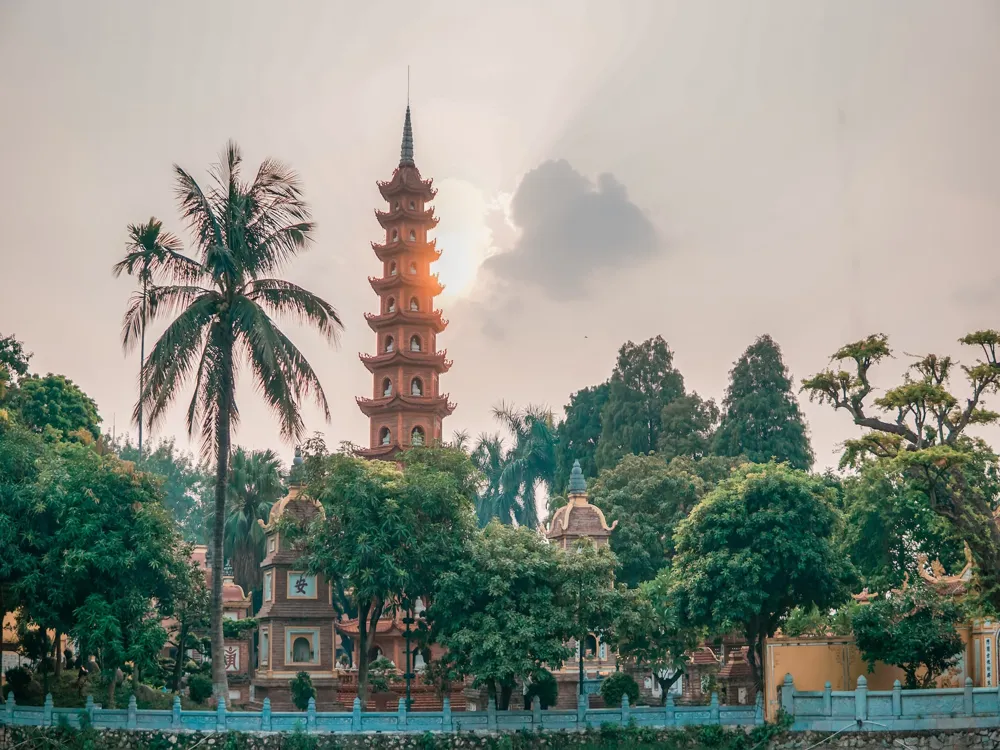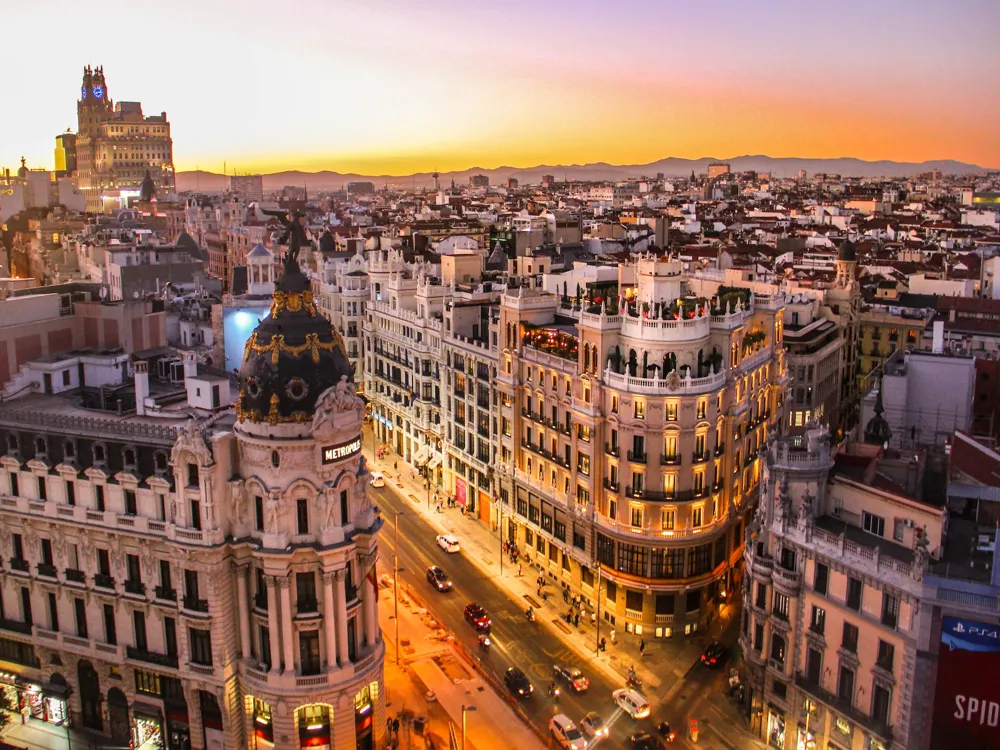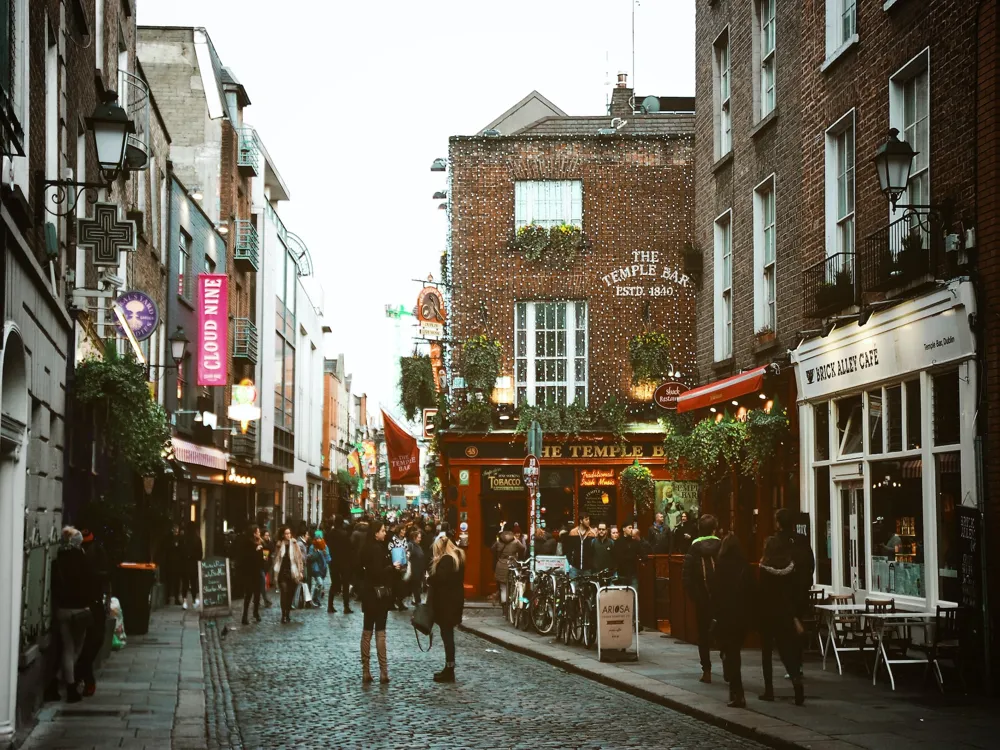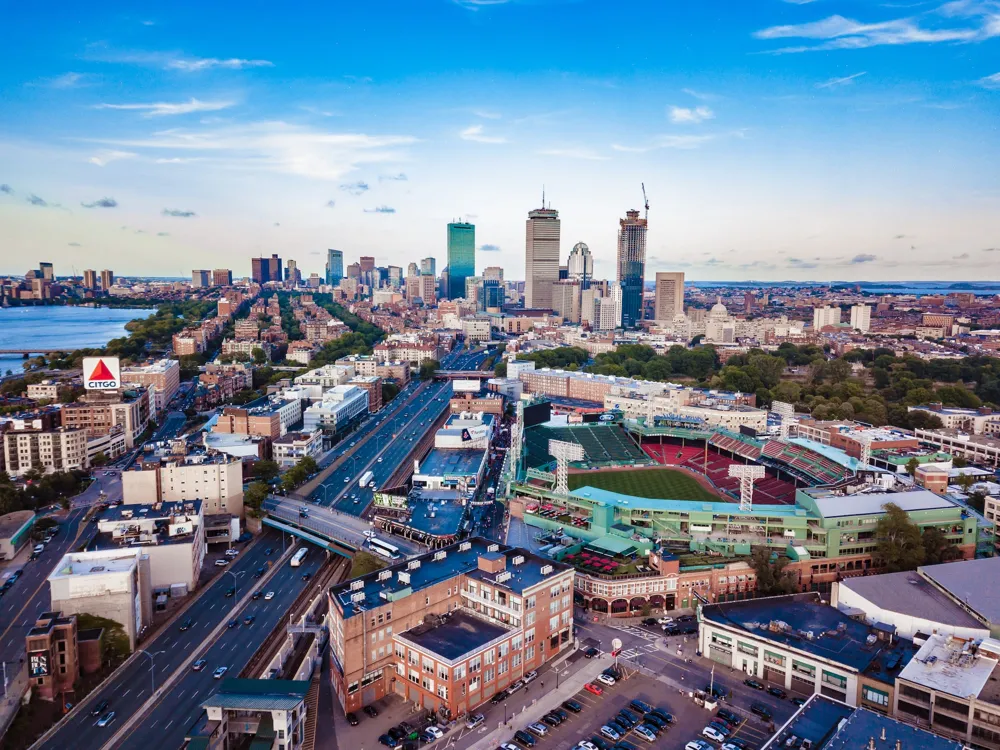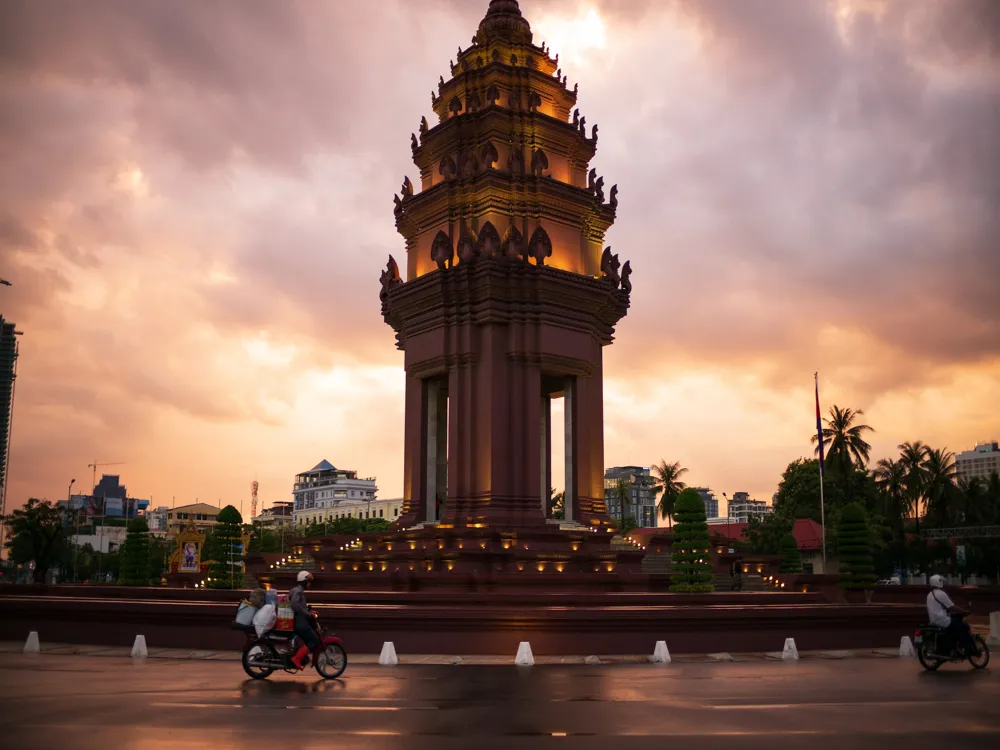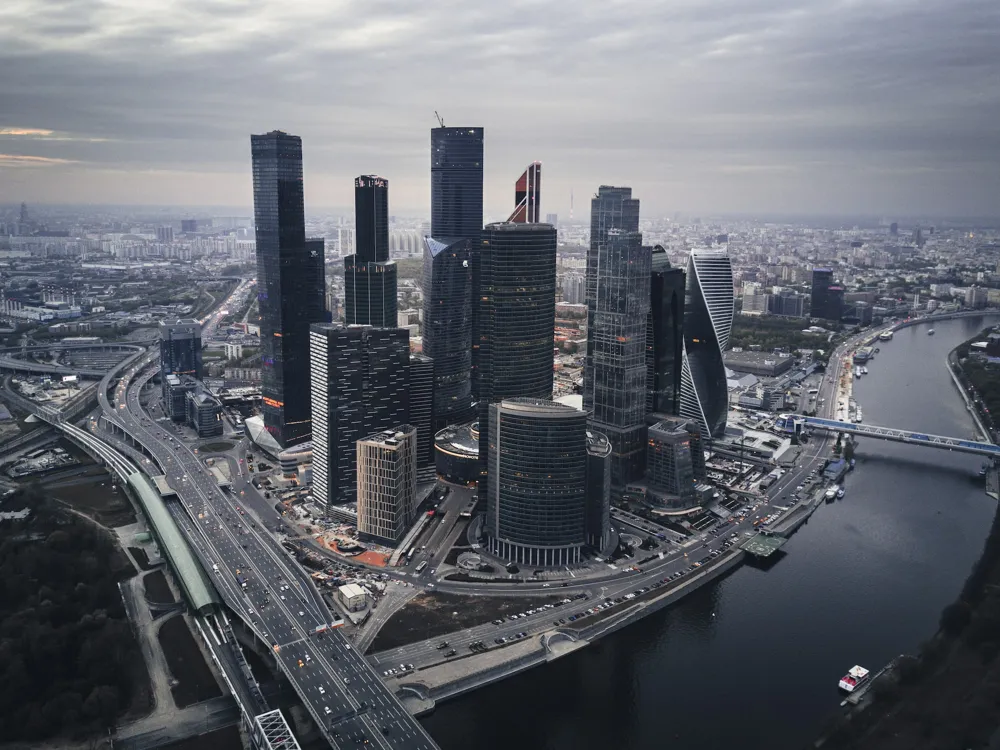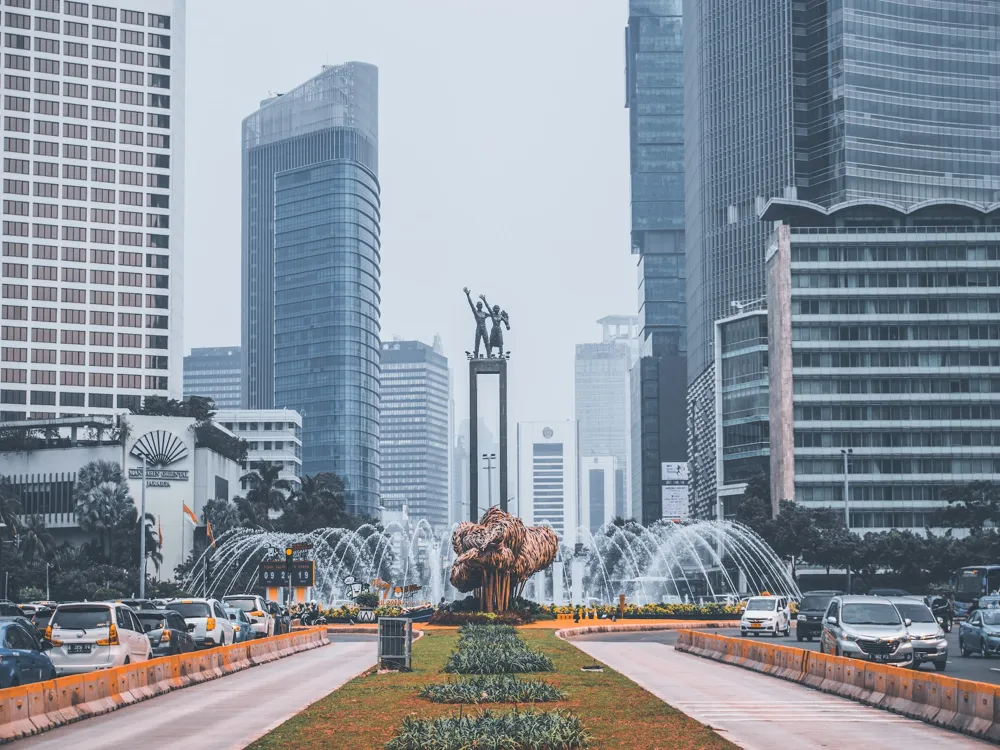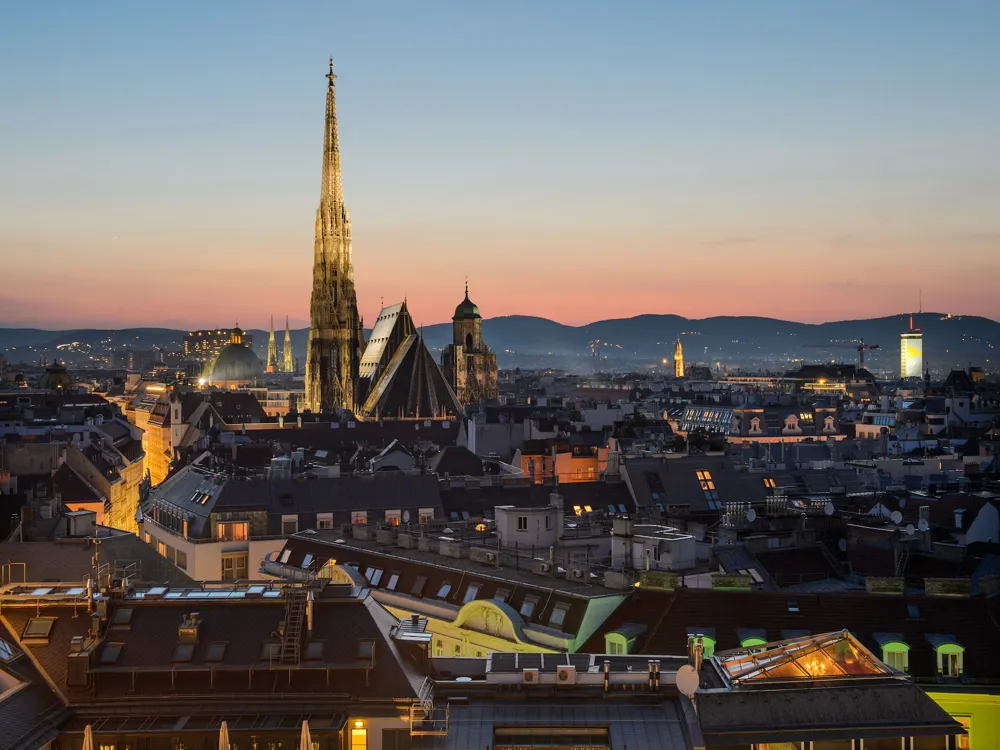Plan Your Travel To Hanoi
Places To Visit In Hanoi
Old Quarter Hanoi
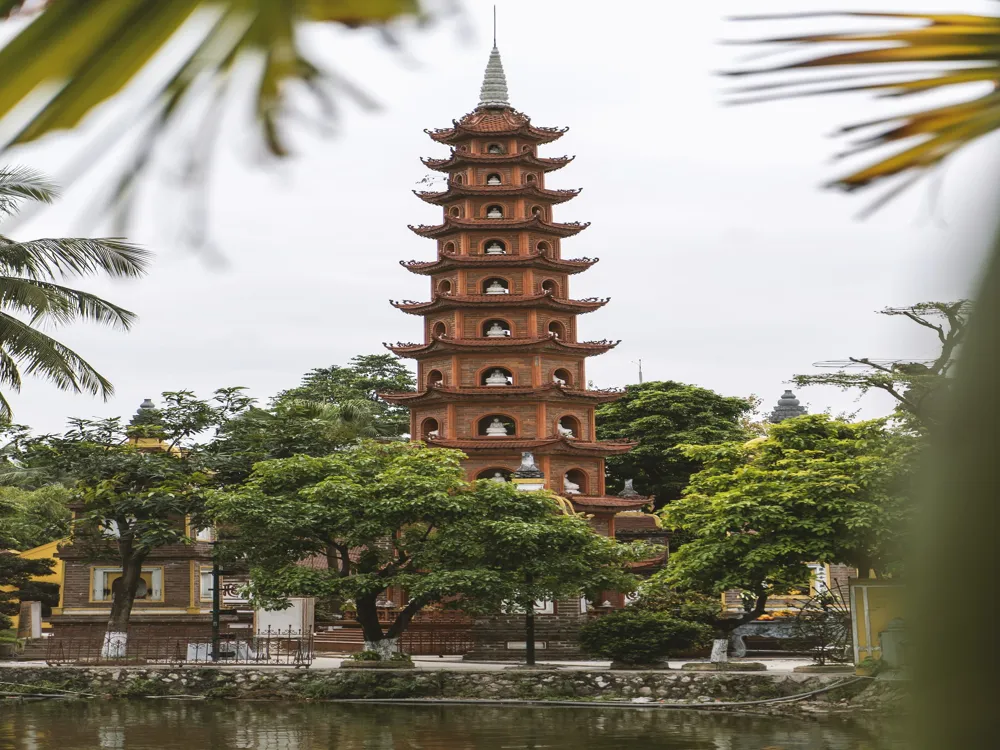
Old Quarter in Hanoi, also known as the Hoan Kiem District or simply 36 Streets, is one of Hanoi's oldest neighborhoods and most popular attractions. It is home to Hanoi's most popular hotels, historical attractions, tourist street shops, and cafes. Among the most popular things to do are sampling the delectable street food, visiting the Hoan Kiem Lake, observing the olden architecture, and shopping at the Hanoi Weekend Night Market.
The Old Quarter is the city's business and cultural hub and still retains the characteristic culture of Vietnam. Always busy, the district is filled with vendors, whizzing locals on their bikes and other tourists. The streets are teeming with local craftsmen selling traditional handicrafts, divided into guilds that specialise in different artefacts, and street vendors supplying mounds of delicious Vietnamese cuisine. The nightlife in the centre of the Old Quarter is pretty exciting too. Bia Hoi junction situated right in the centre is the best spot in town to experience the nightlife of Vietnam the classic way. Many stalls line up the streets and place chairs and stools on the streets, where you can sit and sip on locally brewed beer late into the night. Be sure to feast on the delectable snacks such as beef jerky, summer rolls etc.
Read More
One Pillar Pagoda
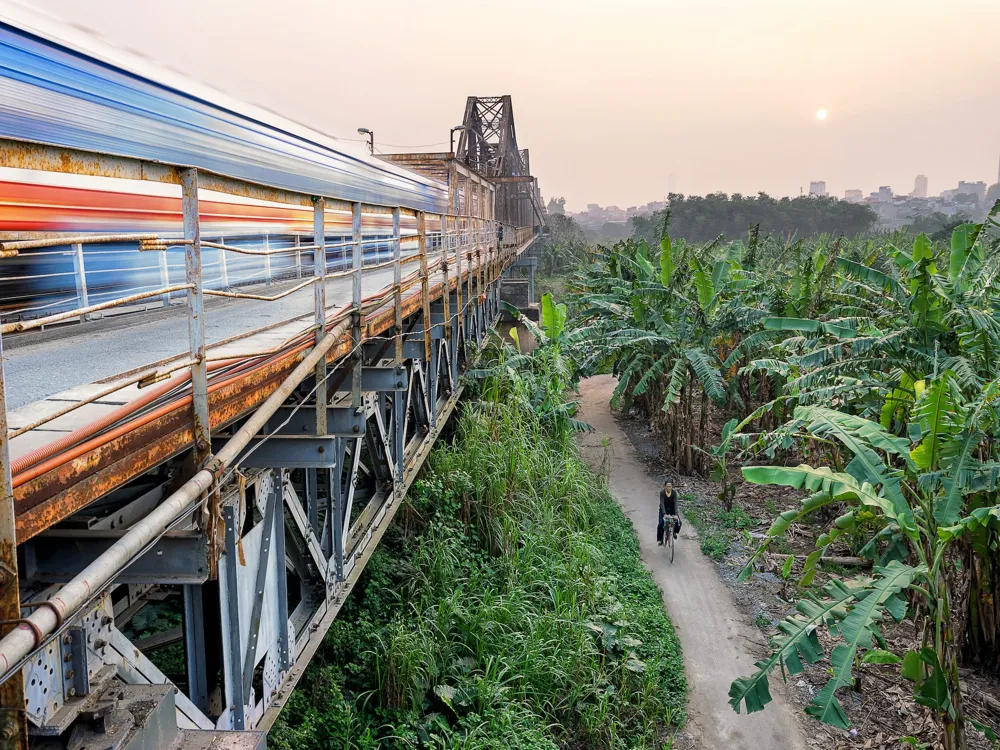
One of the most iconic temples of Vietnam, the One Pillar Pagoda is one pillar built elegantly in the shape of a lotus blossom which is the Buddhist symbol of enlightenment. The shrine inside the Pagoda is dedicated to the Vietnamese Buddhist deity Quan Am. Built in the year 1050 during the reign of the Ly Dynasty, this temple is said to bring blessings of fertility and health. It has been recognized as the 'Most unique architectural temple in Asia' by the Asian Record Organization.
One Pillar Pagoda, also known as Chua Not Cot, is a pristine and historic Buddhist temple located in Hanoi. Considered to be one of the most iconic temples in Vietnam, this pagoda was built between 1028 and 1054. Dedicated to the Buddhist deity Quan The Am Bo Tat and Bodhisattva Avalokiteshvara, it is believed that praying here will bless you with fertility and health. The edifice of this holy temple is equally mesmerizing, built in the shape of a blooming lotus.
One Pillar Pagoda in Hanoi, Vietnam (Source)
The interesting fact about One Pillar Pagoda is that it was built using a single stone and looks exceptionally beautiful and serene. Even though this temple is not huge, the positivity and tranquility that surrounds this place is what attracts a lot of people here. You can even spend some quiet moments sitting under the shade of lush green trees in the garden that surrounds the temple. One Pillar Pagoda is a must visit if you travel to Hanoi because of its fascinating architecture and serene atmosphere.
One Pillar Pagoda Architecture
One Pillar Pagoda in Hanoi is Built on a Single Pillar (Source)
As the name suggests, One Pillar Pagoda was built of wood on a single stone pillar. The Pagoda is built in the Buddhist architectural style, designed in the shape of a blooming lotus which rises from a magnificent square shaped lotus pond. The lotus not only symbolizes purity and hope but is also the Buddhist symbol of enlightenment. The sides of stone pillar bare beautifully carved Buddhist scriptures. The outer square shape of the temple represents yin, while the circular shaped column represents yang.
Temple Complex
The Main Altar of the One Pillar Pagoda is 3 Square Metres (Source)
Main Altar: The tiny, three square-meter temple consists of a purple shrine with interesting bird imagery on the roof, while the main altar is where a glistening gold idol of Goddess Quan The Am Bo is placed. The temple does not occupy a large area but looks splendid nonetheless.
The Garden of the One Pillar Pagoda Enchances the Beauty of the Place (Source)
Garden: One Pillar Pagoda is surrounded by lush green trees which enhances the beauty of this temple tenfold. A Bodhi Tree can be seen behind the temple complex, believed to be an offshoot of the same Bodhi Tree under which Gautam Buddha became enlightened. This tree was a gift by the Indian president, Rajendra Prasad in 1958 to President Ho Chi Minh.
Dress code at One Pillar Pagoda
You should be dressed modestly when visiting the One Pillar Pagoda, as a form of respect to this holy place, covering your arms, legs and chest, otherwise you won't be allowed to enter the pagoda.
One Pillar Pagoda History
The One Pillar Pagoda was Built in the 11th Century, Making it One of Hanoi's Oldest Pagodas (Source)
One Pillar Pagoda was built in the 11th century during the rule of Emperor Ly Thai Tong of the Ly Dynasty. It is believed that the heirless emperor dreamt that Bodhisattva Avalokiteshvara was giving him with male child while resting on a lotus flower. Soon after, the emperor married a peasant girl and was blessed with a baby boy. He built One Pillar Pagoda on the advice of Thien Tue Monk to express his gratitude to the Bodhisattva and Goddess Quan The Am Bo Tat. Large number of people flocked to this temple to pray and seek blessings. But in 1954, the French attacked the One Pillar Pagoda before leaving Vietnam after the First Indochina War and destroyed considerable parts of the temple including the single stone pillar. In 1955, the Vietnam government undertook the renovation and the pillar that supported the Pagoda was replaced.
How to Reach One Pillar Pagoda
One Pillar Pagoda is Located in the Centre of Hanoi, Close to the Ho Chi Minh Mausoleum (Source)
One Pillar Pagoda is located in the centre of Hanoi and can be reached from any part of the city by hiring a car. The major landmark to locate this pagoda is Ho Chi Minh Mausoleum, from where the temple is at a walkable distance of 5 minutes.
One Pillar Pagoda is a Fascinating Temple in Hanoi, Vietnam (Source)
One Pillar Pagoda is one of the most beautiful temples that you will get an opportunity to visit, so do not miss out visiting this pagoda during your trip to Hanoi. The magnificent architecture replicating a blooming lotus and the serenity that surrounds this place will make you feel at ease and fill your heart with happiness.
Read More
Pagoda But Thap
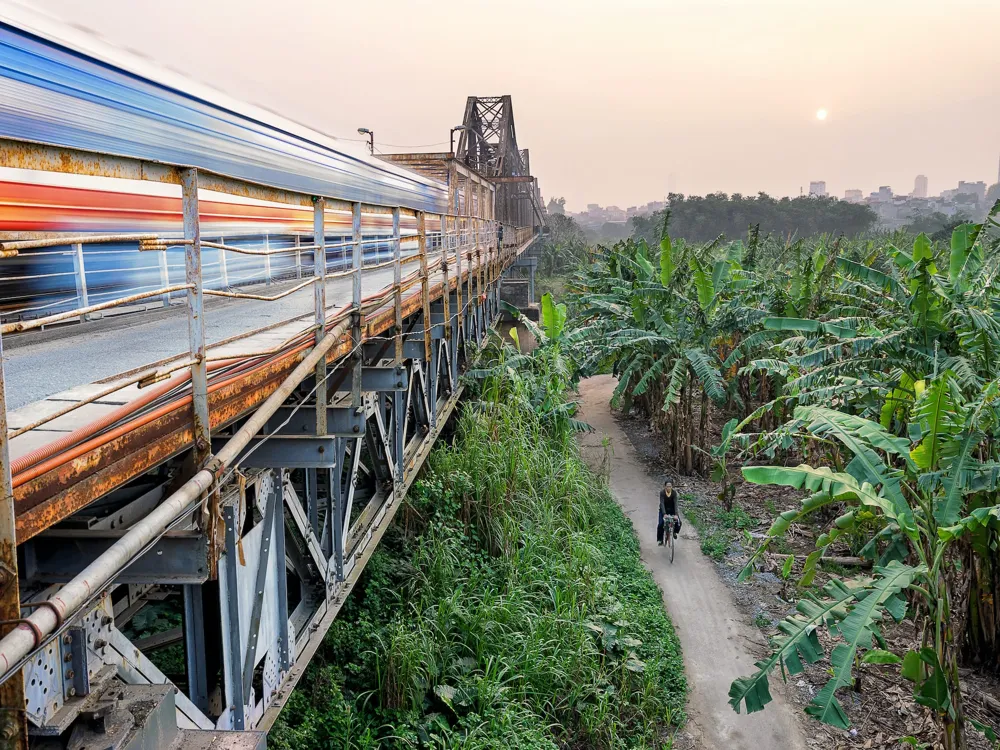
Built in 13th century during the rule of Tran Dynasty, the But Thap Pagoda is known to have unique architecture with a combination of Vietnamese and Chinese culture. Consisting of over 50 Buddha statues on the inside, the pagoda has beautiful carvings, three traditional gates and a bell tower outside, all built with marvelous ancient designs.
Pagoda But Thap known as Chua But Thap in the local Vietnamese language is an ancient temple dedicated to Lord Buddha. It is located within the Bac Ninh Province, about 30 KM away from Hanoi. It is a local tourist attraction with visitors from different parts of the world making sure to travel up to the shrine in order to enjoy the peace and quiet of the surroundings, as well as to admire the Avalokitesvara Statue of Buddha. Alternatively known as the Guanyin (translated as Goddess of Mercy), it is an enormous lacquered figure with a thousand eyes and thousand hands that had been etched out of wood. It is indeed a fitting example of the skills of the ancient craftsmen and has come to be reckoned as a sculptural marvel.The Avalokitesvara Buddha or Guanyin Statue, with a ThousandEyes and Arms, is One of the Main Draws of the Temple(Source)Pagoda But Thap stands amidst lush greenery evident everywhere in the countryside of Vietnam. The old structure looks similar to an abandoned building but the visitors are held spellbound by the plethora of ancient treasures preserved within it. It is also a center of Buddhism with thousands of pilgrims visiting the pagoda to pay their homage to Lord Buddha.Pagoda But Thap HistoryPagoda But Thap Was Constructed in the 13th Century, and One of the Most Popular Pagodas of North Vietnam (Source)The Pagoda But Thap, popularly known as the Nhan Thap Temple, is one of the most popular pagodas in Northern Vietnam. The impressive place had been constructed back in the 13th century during the reign of King Tran Thanh Tong. However, it did not stand the test of time and was rebuilt in the 17th century when the honorable Zen master and Abbot Chuyet Chuyet visited it.Pagoda But Thap ArchitecturePagoda But Thap is Surrounded by Banyan Trees and Areca Nut Palm Trees (Source)An old gate leading into the But Thap Pagoda is protected by gigantic Banyan trees as well as numerous areca nut palms that provide shelter from the intense heat of the sun during the summer months. The building complex consists of 10 edifices including two wide corridors spread over an area totaling 16,000 square meters. The wooden pillars and the ancient doors, built in accordance to the Noi Cong Ngoai Quoc style of architecture, have floral motifs carved into them. The use of ethnic and traditional materials gives the pagoda an authentic touch. Timber, wood and stones were utilized to connect the different areas showcasing the real wealth of Vietnam. The tiled balconies and quaint stone bridges over the lotus ponds make it seem like a palace but with a difference. The pagoda celebrates knowledge and wisdom and is an abode of spirituality instead of glorifying the rulers of that era.The Bao Nghiem Tower at Pagoda But Thap is Madeof White Rock (Source)Of particular interest are the twin towers of Bao Nghiem (octagonal bell tower) & Ton Due measuring 13 meters in height, made out of white rock. The pagoda also serves as a repository of old artifacts with many ancient relics such as the Lotus Tower, Tuyet Son Statue, and the tomb of Xa Ly, all dating back to the 17th century.How to Reach Pagoda But ThapPagoda But Thap is Located in the Bac Ninh Province, 30 kilometres away from Hanoi (Source)Pagoda But Thap is situated on the dyke of River Duong and located within the Thuan Thanh District of the Bac Ninh Province, North Vietnam. The distance between Hanoi and Bac Ninh is 30 KM but one needs to traverse a distance of 32 KM to reach the pagoda. The fastest way to travel to the site would be by metered taxi that charges VND 528,669.65 (approx). Hiring a car and having it wait for returning to the city is the preferred mode of travel. Tourists, especially the backpackers also choose to use the bus service from Hanoi to Bac Ninh that has a single bus departing per day. Tickets are priced at VND 66083 with the bus taking about 40 minutes to reach the destination.Pagoda But Thap Near Hanoi, Vietnam (Source)Pagoda But Thap, located within the Thuan Thanh district of the Bac Ninh province in Northern Vietnam, is known as a 'national cultural historic relic' of the country and a center of Buddhism. It is the oldest pagoda in the area, with numerous tourists visiting it. It has been photographed widely and is recognized worldwide for its peaceful environment and unique architecture.
Read More
Perfume Pagoda
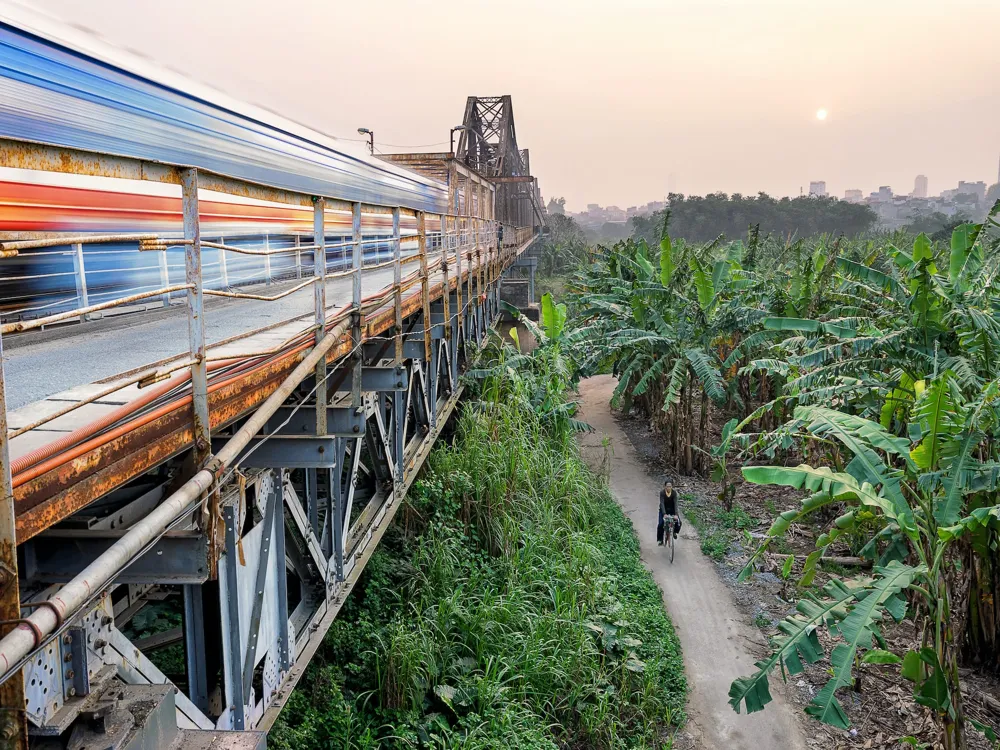
The Perfume Pagoda or Chua Trong is among Hanoi's two most important and revered temples. It is located at the centre of the Huong Pagoda complex - a huge array of Buddhist temples and shrines built into the Huong Tich mountains. The stalactite and stalagmite formations inside the cave are believed to bestow one with good luck! It takes 2 hours from Hanoi to My Duc in a car. From there, you need to take a boat to the foot of the mountain and then a cable car to the temple complex.
The temple is revered mainly for its surroundings and is most popular for its 'Perfume Pagoda Festival'. It lies 60 kms southwest of Hanoi and derives its name from the spring blossoms growing in the area that make the place's air redolent.
Read More
Phu Tay Ho
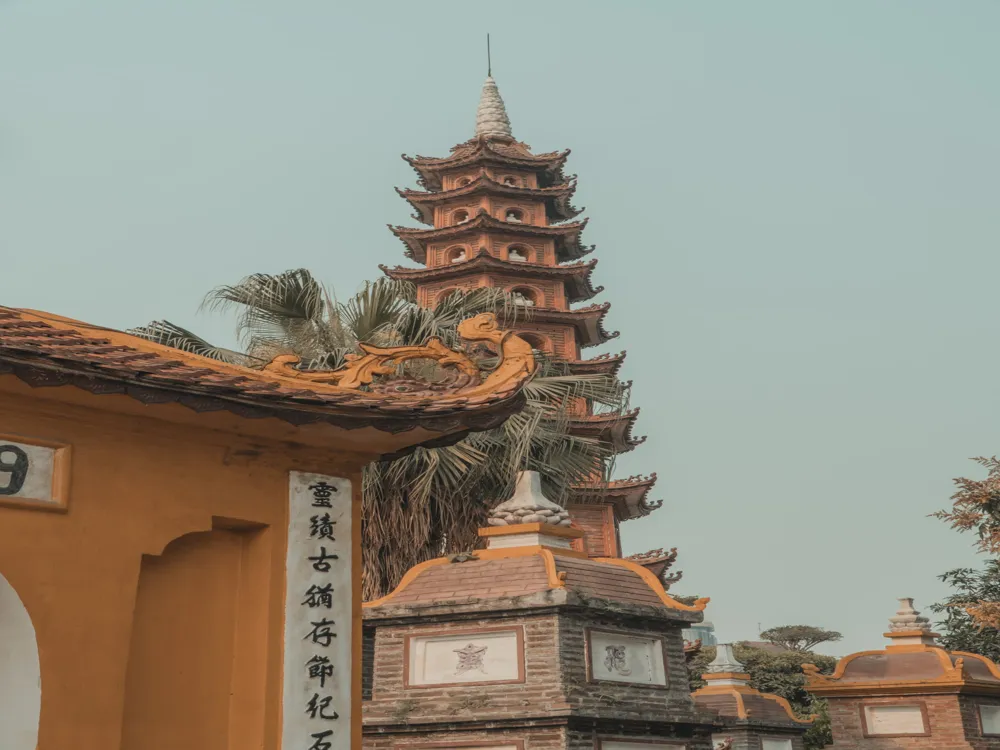
Phu Tay Ho is a temple dedicated to Mother Goddesses and the Jade Emperor. The pagoda has some brilliant architecture and many worship objects like the altar, statues, bronze bells, canopies and royal seat, all very beautifully decorated. The temple turns into a celebration on the 15th day of each lunar month. Tourists often come here to pray and enjoy the serene landscape of West Lake.
If you are planning a trip to Vietnam, do not forget to enlist the Phu Tay Ho temple into your tour plans. Extended out into West Lake in Tay Ho district, this temple is perhaps the most popular place of worship in Hanoi. Even though Phu Tay Ho might look like a traditional Buddhist temple, this historical structure holds special religious significance as it is dedicated to Mother Goddess, more commonly known among the Vietnamese people as Thanh Mau - meaning Mother of the Nation. Pilgrims from all over the country and the world come to this temple not only to pray but also to relish the distinctive lively atmosphere and marvellous views across the water.Phu Tay Ho HistoryPhu Tay Ho Temple is Dedicated to Worship of the Mother Goddess (Source)According to legends and folktales, it is said that Mother Goddess appeared in the form of a pretty girl during the 17th century. An angler saw her on a lake, as she was smiling and reciting poetry. Her name was Lieu Hanh, and she had an exquisite talent for singing songs, playing music and writing poetry. Nonetheless, she was nowhere to be found suddenly after few days of her arrival. All that was left of her was a scroll of poetry. Later on, the locals built the Tay Ho pagoda in her honour. Phu Tay Ho ArchitectureSourceAfter passing through several stalls selling flowers, sweets and incense sticks intended for offerings and worship at Phu Tay Ho, tourists enter into a building that houses three ornate thrones meant for the goddesses. The three-door entrance of the temple was built in curves, and the roofs are covered with tube-tiles. Panels on either side of the temple cite the legendary meeting between Goddess Lieu Hanh and Phung Khac Khoan.Inside the Phu Tay Ho Temple, Hanoi (Source)The main prayer hall is present in the middle chamber where you can find a sub-altar containing the statue of a holy tiger that protects Lieu Hanh. Her statue is at the back of the chamber, visible through the wooden slats of a locked separating wall. You will find another national mother figure in the second hall - Nhi Thuong Ngan. Women come here, pray for happiness, and luck in marriage and motherhood. The statues of two other goddesses - Mau Thai and Mau Dia are present in that hall as well. All these three goddesses explain the evolution of Vietnamese residents from forests, streams and rivers to lowland paddy fields. One of the rooms also houses the statue of Jade Emperor.SourceThe well-maintained courtyard displays a golden buffalo and its calf, which is related to ancient Vietnamese folklore dating back to the Ly Dynasty. The courtyard also has two prayer stupas dedicated to the guardian spirits of young boys and girls - Lau Cau and Lau Co.Apart from this, Phu Tay Ho temple has many worship objects such as altars, fresco and royal seat. All of them are beautifully decorated and carved, reflecting the signs and styles of the 19th-century architecture. The temple also has canopies, a stone incense-burner, three bronze bells and fifty statues of different sizes and stances.Phu Tay Ho SignificanceSourceQuite interestingly, Phu Tay Ho was granted as Relics of Cultural History on 13th February 1996 by the Ministry of Culture, Sports and Tourism of Vietnam. Phu Tay Ho is thronged by pilgrims and tourists alike on the first and 15th day of every lunar month in the hope of receiving blessings from Mother Goddess. During the spring and summer seasons, locals are found treading water at a distance of about 200 yards from the lakeside wall of the temple. They wear conical hats and handle long pole-nets to collect snails from the bottom of the lake.The Tay Ho Festival takes place annually from the 3rd day to the 7th day of the third lunar month of the year. The festival involves a goddess' palanquin procession starting from Phu Tay Ho temple, going through Yen Phu, Co Ngu Streets, Quan Thanh Street, Hang Dau Street and stops at Nghia Lap Temple. Poetry contests along with dancing and singing are held on the last two days of the festival. Attractions Near Phu Tay Ho1. West Lake:SourceLocally known as Tay Ho lake, the mysterious history behind this lake intrigues many tourists. It is believed that the lake was formed when the Dragon King Lac Long Quan drowned a wicked fox spirit that had nine tails in his den. One more folktale suggests that the lake was formed when a large Chinese buffalo ran fiercely into a small hollow after mistaking the sound of a pagoda bell with its mother's call. In the present day, West Lake is a beautiful place to spend a pleasant afternoon. Tourists can hire boats and can have lunch on one of the floating restaurants to experience a noble dining option. 2. Tran Quoc Pagoda:SourceBuilt in the 6th century, the Tran Quoc Pagoda is the oldest temple in Vietnam. It resides on a small island, and it was built as a cultural symbol of Vietnamese Buddhism by King Ly Nam De. The pagoda looks stunning particularly in early evenings at sunset.3. Quan Thanh Temple:SourceAnother important attraction located at the West Lake crossroads of Quan Thanh Street and Thanh Nien Street is the Quan Thanh Temple. It is one of Four Sacred Temples of Vietnam, built during the reign of King Ly Thai in between 1010 and 1028. The details wooden carvings of sacred animals, flowers and trees on the monument are some of the fascinating features of the temple. Pilgrims pray for their health, happiness and luck during the visit to this holy place.Best Time to Visit Phu Tay HoThe Best Time to Visit Phu Tay Ho is During the Tay Ho Festival (Source)Although Phu Tay Ho is visited by pilgrims, locals and tourists all year long, it remains flocked on the first and 15th day of each lunar month, and during the Tay Ho festival. Hence, that is considered the best time to visit this holy place.How to Reach Phu Tay HoThe easiest way to reach Phu Tay Ho temple is from Ba Dinh Square. Visitors have to head towards Hung Vuong, which leads to West Lake. Upon reaching the lake, one has to go around the lake towards the north side where the road turns left into the peninsula. You will find Phu Tay Ho temple at the very tip of the peninsula.Phu Tay Ho is Located near West Lake in Hanoi, Vietnam (Source) Add a spiritual touch to your tour to Vietnam and visit the peaceful, pious environment of Phu Tay Ho temple. Let the heavenly scenery of the lake sink in and be acquainted with the majestic stories about Vietnam's history. Moreover, you do not need to worry, as it will not make your holidays less enjoyable!
Read More
Presidential Palace
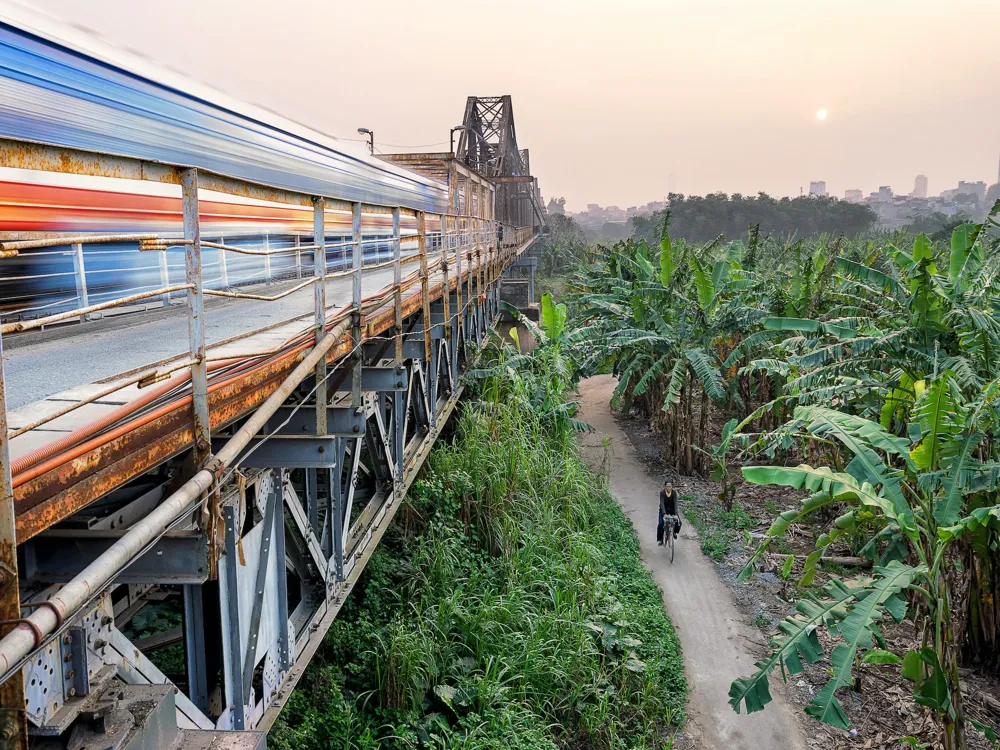
Presidential Palace of Hanoi is located in the Ba Dinh District of Hanoi at Hung Vuong St. and Hoang Van Thu St.
Constructed in 1900, the Presidential Palace of Hanoi was originally intended to be Ho Chi Minh's official residence. At present, tourists are not allowed to enter the interiors of the building.
The Presidential Place is a three-storey mustard yellow building with 30 rooms. It is mostly used for political gatherings. Built in French architectural style, the palace is surrounded by lush green botanical gardens.
The palace was built for the national hero, but he chose to stay in a traditional Vietnamese stilt house instead. Even though entry is barred into the palace, you can still appreciate the stunning architecture and the refreshing gardens that surround it. Presidential Palace in Hanoi is deeply rooted in the history of Vietnam. From the oppression of French colonisers to the triumph of victory, this building has seen it all. It is a constant reminder of the dark colonial era of Vietnam and the drastic alterations it brought. The Ho Chi Minh Stilt House within the palace's compound speaks a lot about the simplicity of the Vietnamese people. Overall, the Presidential Palace Historical Site is a buzzing ground for sightseeing tourists and history enthusiasts.
Read More
Quan Thanh Temple
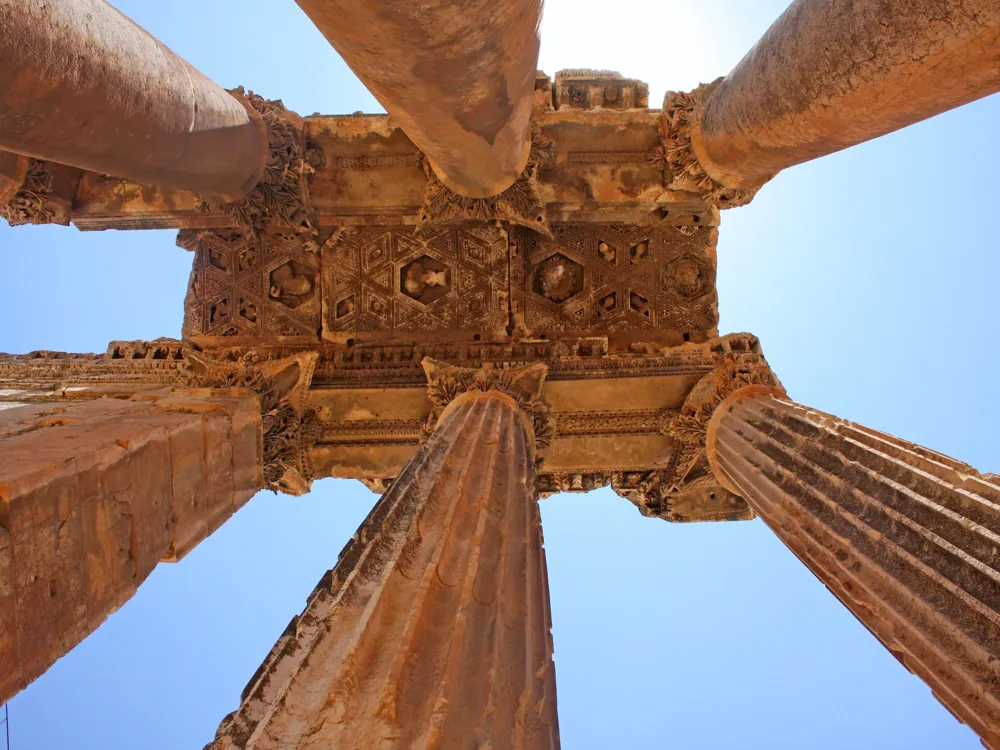
Quan Thanh Temple is a Taoist temple built to honour the God of the North 'Tran Vo'. Located near the Truch Bach Lake, it is among the most significant temples in Vietnam. In his honour, the temple also uses the tortoise and snake as symbols of protection and wealth respectively. It houses a 4-metre tall bronze statue of Tran Vo.
The artefacts of Quan Thanh Temple have been preserved successfully till date, and thus it is considered a highly valuable relic of Vietnam's artistic culture. Arrays of wooden carvings, statues portraying sculptural expertise, harmonious spaces and ground layouts complemented by the airy views of West Lake together adorn the ancient dreaming beauty of Quan Thanh Temple.
Read More
Quang Ba Flower Market
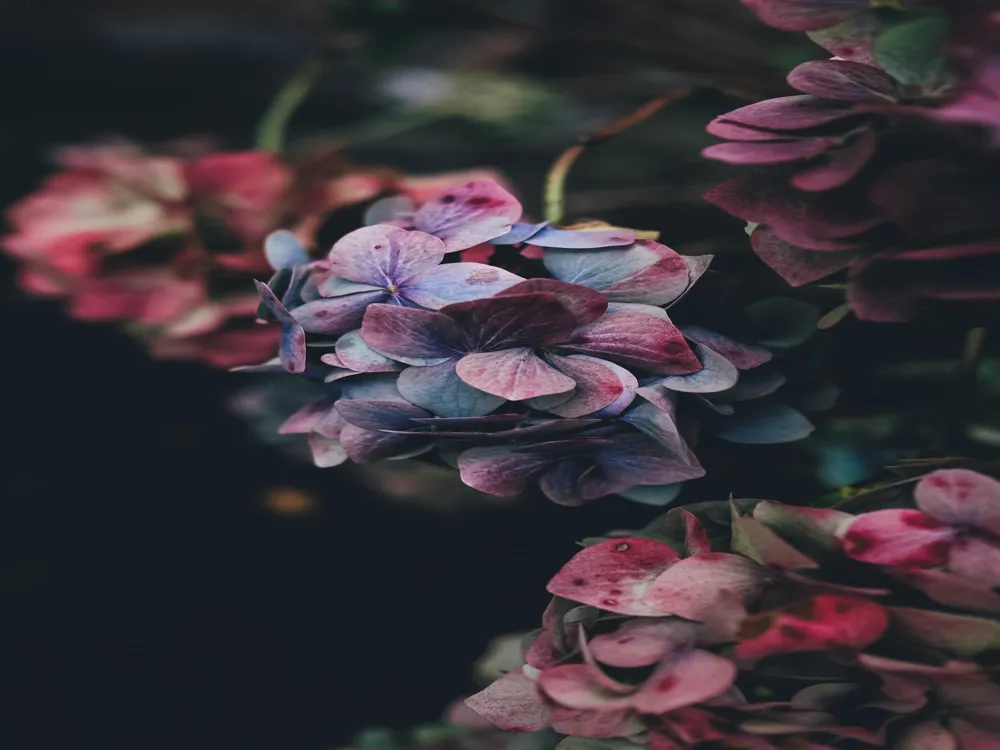
The Quang Ba Flower Market is a picturesque wholesale flower market in Hanoi. Every night, trucks from Da Lat bring in masses of colorful flowers like sunflowers, roses, tulips, orchids, lilies among many others. The local vendors buy from the truck and sell it to individual buyers. This night market is perfect for a photographer wanting to capture a street illuminated with colorful flowers.
Quang Ba flower market is the place you should visit to get an authentic experience of Hanoi. This place is the actual and factual representation of Hanoi, its people, and some amazing Vietnamese flower species. The Quang Ba flower market is functional at very early hours and being a tourist can be quiet tough on your comfort zone. The market is most bustling during 2am - 4am, being the time when the suppliers and the wholesalers make deals here. While the tourist crowd is less here, especially at these hours, it is still a must visit in Hanoi because here you can get captivated by the environment and live like the locals, watch them load a mere motorcycle with tons of flowers, observe them bargain and the most important, you can shop without drilling a hole in your pocket, as all the prices are at wholesale rate. This place is a paradise for street and portrait photographers.Fresh Flowers are Brought to the Quang Ba Flower Market Every Morning (Source)The market consists of two important corridors, with rows of shops on either sides. The right side is lined with street food stalls. The flower shops are illuminated by low power lights, that gives an aesthetic dimmed feel to the atmosphere but challenges the lens bearers.Best Time to Visit Quang Ba Flower MarketThe Best Time to Visit the Quang Ba Flower Market is Between 2:00 AM and 4:00 AM (Source)The best time to visit Quang Ba market is from 2 am to 4 am in the morning any time of the year. However, there is another session which is from 4 am to midday, but that isn't much interesting as the freshest blossoms gets carried away. The market is the most colourful and vibrant during Tet (Vietnamese New Year), that is also an excellent time to visit the place.How to Reach Quang Ba Flower MarketQuang Ba Flower Market is Located in Tay Ho District of Hanoi in Vietnam (Source)Quang Ba Market is located in the Tay Ho district of Hanoi which is nearly a 25 minutes' drive from the Old Quarter. The main entrance is via a marked passage and gets converged down the Au Co street. Grab Cars and taxis are available which will cost you around VND 100,000. Bus numbers 31, 55 and 58 will take you to the Quang Ba Flower Market Bus Stop.Quang Ba Flower Market in Hanoi, Vietnam (Source)To spend a morning like a local and to experience some of Hanoi's culture, Quang Ba flower market is the perfect spot. Be cautious of the speeding motorcycles, and enjoy an abode of colours and wonderful moments.
Read More
Keangnam Hanoi Landmark Tower
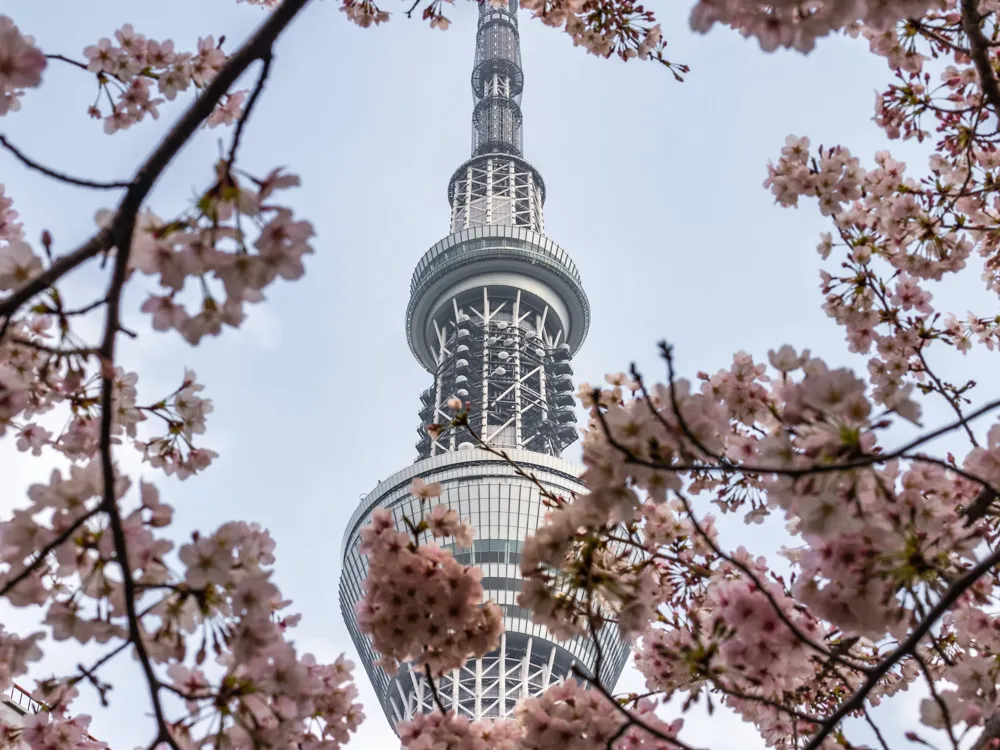
Keangnam Hanoi Landmark Tower, or Sky 72 Observatory, is the tallest skyscraper in Vietnam at 350 metres. The last floor of the building is a deck that offers a 360 degree view of Hanoi. This state-of-the-art observatory consists of residences, commercial offices, restaurants, gift shops, a museum, cinema, swimming pool, fitness centre and an art gallery, all in one complex.
St Joseph's Cathedral
St. Joseph's Cathedral is an architectural marvel with its elegant neo-gothic architecture built during French colonization. Resembling a lot with Notre Dame de Paris, the facade of this church consists of twin towers. The locals like to call this cathedral 'The Big Church' since it serves as the headquarters of the Roman Catholic Archdiocese in Vietnam.
The St. Joseph's Cathedral has beautiful architecture, glass windows and an elaborate altar are among its noteworthy features. It is locally known as 'The Big Church' and is the headquarters of the Roman Catholic Archdiocese of Hanoi for more than 4 million Catholics in Vietnam.
Read More
Hanoi Travel Packages
View All Travel Packages Hanoi
Nearby Places Hanoi
Browse Package Collections
Browse Hotel Collections










